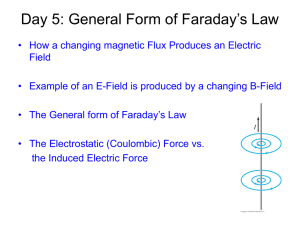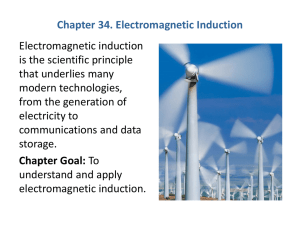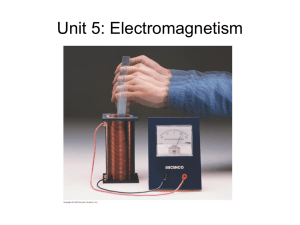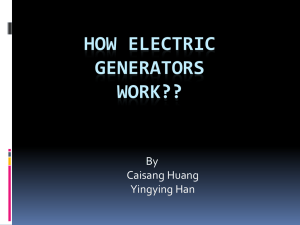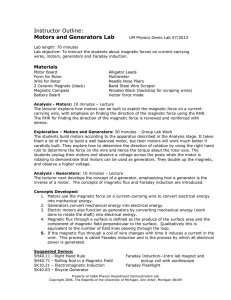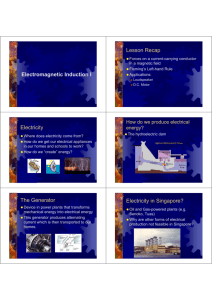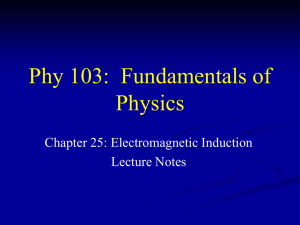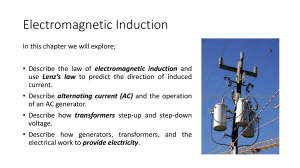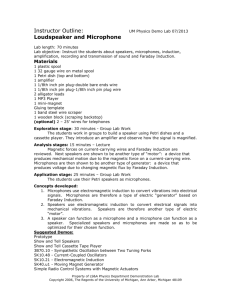Y13 Magnetism and Induction
advertisement
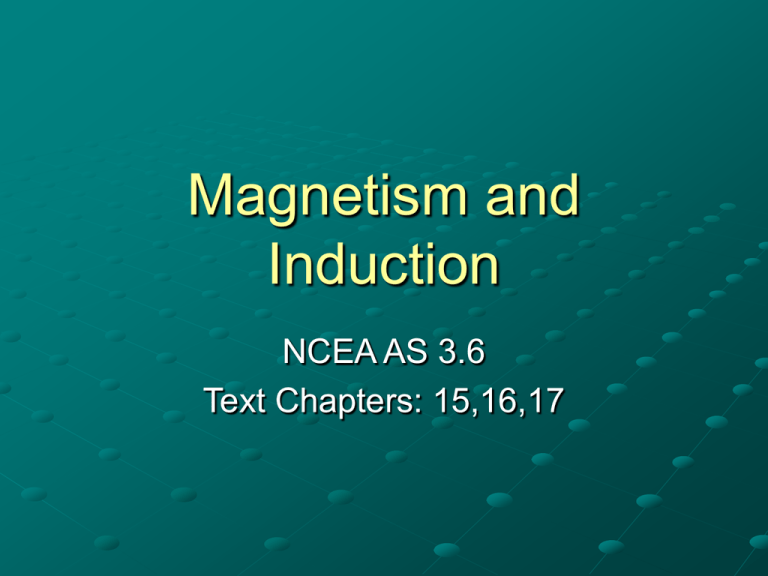
Magnetism and Induction NCEA AS 3.6 Text Chapters: 15,16,17 Electromagnetism Fields are formed around current carrying wires Solenoids Fields are formed in solenoids or coils. Induction If a wire is moved through a magnetic field then a voltage can be induced across the ends the wire. Induction If the wire is connected to a circuit then current will flow. The direction of induced current is determined by a right hand rule. Right Hand Slap Rule v=direction of wire movement B=direction of magnetic field lines F= force on a positive charge (ie direction of current flow) Induction The size of this induced voltage is given by: V=BvL (B=mag field strength, v=velocity of movement, L=length of wire in field) This is known as Faraday’s Law Induction The direction of the induced current is such that it creates an opposing force on the motion that is causing it. This is known as Lenz’s Law Induced current I Opposing Force F=BIL Direction of movement Induction Induced voltage/current can be made larger if: The mag field is stronger The wire is longer The movement is faster (Solenoid has an iron core) Induction Induction can also occur if it is the magnetic field that is moved, rather than the wire. Magnetic Flux The magnetic field in a circuit is measured as magnetic flux Φ Φ= BxA B = mag field strength A = area perpendicular to field The unit for flux is the Weber Wb Magnetic Flux A useful analogy is using a net to catch whitebait in a stream…. If you don’t hold the net straight up and down, you don’t catch many whitebait!! Faraday’s Law According to Faraday’s Law, V=BvL The area of the loop in the field is zero….. L Speed v Faraday’s Law Some time t later, A has changed by ΔA = (vt x L) ΔΦ = B x ΔA ΔΦ = B x v x L x t But V=BvL So ΔΦ = V x t L A v Faraday’s Law (again) Another way to look at Faraday’s Law is that the induced voltage in a circuit is determined by the rate of change of flux The negative sign is a reminder of Lenz’s Law V t Generators Rather than sliding a loop through a field, it is easier to spin it. This is how a generator works Generators When the coil is horizontal, the induced current is maximum, as the coil is cutting across the field lines at right angles as it moves. Generators When the coil is vertical, the induced current is zero, as the coil is moving parallel to the magnetic field lines Generators If we start timing from when the coil is vertical, then at t=0, Φ= BxA B N A S Generators If the coil rotates with speed ω, then after time t the coil will have turned through angle θ = ωt The flux will now be Φ= Bcosωt x A B θ N S A Generators Faraday’s Law says: d V dt d ( BA cos t ) V dt V BA sin t For a coil of N turns: V BAN sin t Generators The formula for alternating generator voltage is often written as: V Vmax sin t Where Vmax=BANω This produces a voltage-time graph that looks like a sine curve NB. Similarities to SHM!! Generators To generate A.C, slip rings are used… Generators To generate D.C, split rings are used.
